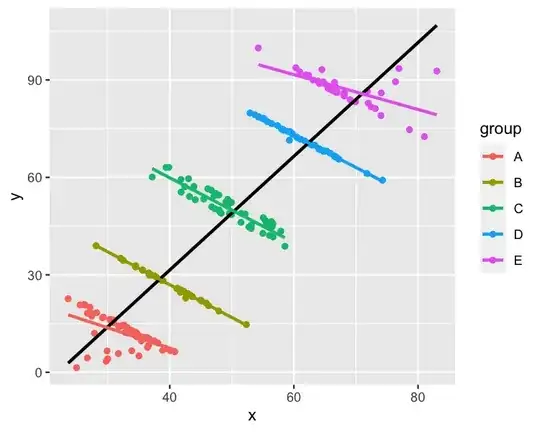You describe truncation to an interval. I will elaborate.
Suppose $X$ is any random variable (such as an exponential variable) and let $F_X$ be its distribution function,
$$F_X(x) = \Pr(X\le x).$$
For an interval $[a,b],$ the truncation limits $X$ to that interval. That lops off some probability from $X,$ namely the chance that $X$ either is less than $a$ or greater than $b.$ The chance that is left is
$$\Pr(X\in[a,b]) = \Pr(X\le b) - \Pr(X\le a) + \Pr(X=a) = F_X(b) - F_X(a) + \Pr(X=a).$$
Thus, to make the total probability come out to $1,$ the distribution function for the truncated $X$ must be zero when $x\lt a,$ $1$ when $x\ge b,$ and otherwise is
$$F_X(x;a,b) = \frac{\Pr(X\in[a,x])}{\Pr(X\in[a,b])}= \frac{F_X(x) - F_X(a) + \Pr(X=a)}{F_X(b) - F_X(a) + \Pr(X=a)}.$$
When you can compute the inverse of the distribution function--which almost always means $X$ is a continuous variable--it's straightforward to generate samples: draw a uniform random probability $U$ (from the interval $[0,1],$ of course) and find a number $x$ for which $F_X(x) = U.$ This value is written
$$x = F^{-1}_X(U).$$
$F_X^{-1}$ is called the "percentage point function" or "inverse distribution function."
For example, when $X$ has an Exponential distribution with rate $\lambda \gt 0,$
$$U = F_X(x) = 1 - \exp(-\lambda x),$$
which we can solve to obtain
$$F_X^{-1}(U) = -\frac{1}{\lambda}\log(U).$$
This is called "inverting the distribution" or "applying the percentage point function."
It turns out--and this is the point of this post--that when you can invert $F_X,$ you can also invert the truncated distribution. Given $U,$ this amounts to solving
$$U = F_X(x;a,b) = \frac{F_X(x)-F_X(a)}{F_X(b) - F_X(a)},$$
because (since we are now assuming $X$ is continuous) the terms $\Pr(X=a)=0$ drop out. The solution is
$$x = F_X^{-1}(U;a,b) = F_X^{-1}\left(F_X(a)+\left[F_X(b) - F_X(a)\right]U\right).$$
That is, the only change is that after drawing $U,$ you must rescale and shift it to make its value lie between $F_X(a)$ and $F_X(b),$ and then you invert it.
This yields the second formula in the question.
An equivalent procedure is to draw a uniform value $V$ from the interval $[F_X(a),F_X(b)]$ and compute $F_X^{-1}(V).$ This works because the scaled and shifted version of $U$ has a uniform distribution in this interval. I use this method in the code below.

The figure illustrates the results of this algorithm with $\lambda=1/2$ and truncation to the interval $[2,7].$ I think it alone is a pretty good verification of the procedure.
The R code is general-purpose: replace ff (which implements $F_X$) and f.inv (which implements $F^{-1}_X$) with the corresponding functions for any continuous random variable.
#
# Provide a CDF and its percentage point function.
#
lambda <- 1/2
ff <- function(x) pexp(x, lambda)
f.inv <- function(q) qexp(q, lambda)
#
# Specify the interval of truncation.
#
a <- 2
b <- 7
#
# Simulate data and truncated data.
#
n <- 1e6
x <- f.inv(runif(n))
x.trunc <- f.inv(runif(n, ff(a), ff(b)))
#
# Draw histograms.
#
dx <- (b - a) / 25
bins <- seq(a - ceiling((a - min(x))/dx)*dx, max(x)+dx, by=dx)
h <- hist(x.trunc, breaks=bins, plot=FALSE)
hist(x, breaks=bins, freq=FALSE, ylim=c(0, max(h$density)), col="#e0e0e0",
xlab="Value",
main="Histogram of X and its truncated version")
plot(h, add=TRUE, freq=FALSE, col="#2020ff40")
abline(v = c(a,b), lty=3, lwd=2)
mtext(c(expression(a), expression(b)), at = c(a, b), side=1, line=0.25)
